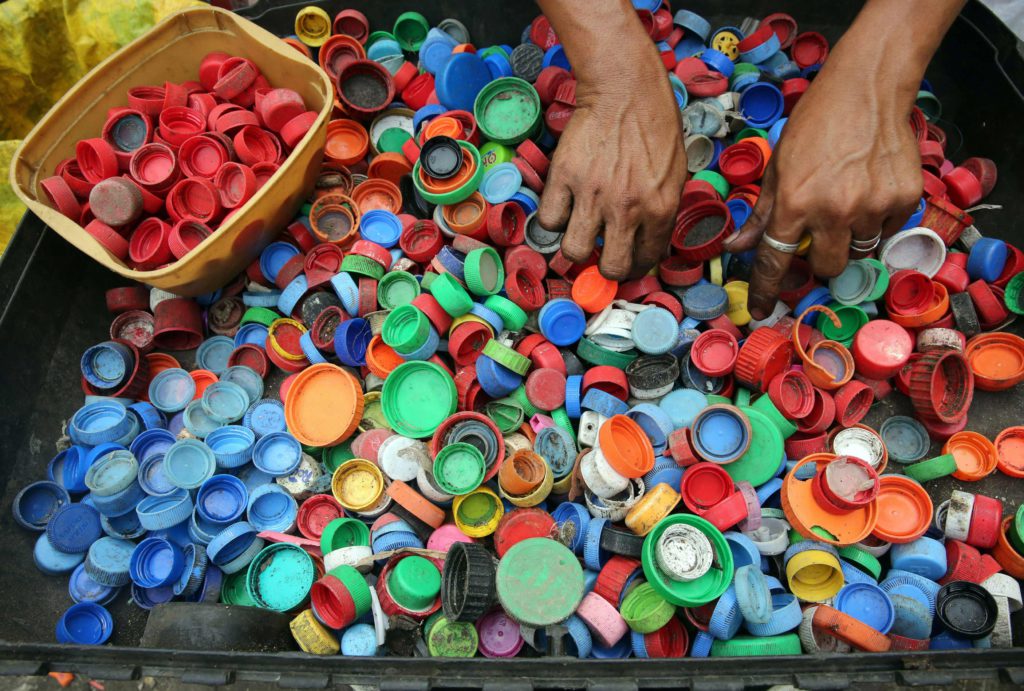We are all familiar with the terms biodegradable, compostable, and recyclable, but what exactly is the difference between them? If we recycle items, why do they need to be compostable and biodegradable? What does it all mean?!
Well, we have done some digging around to find out what really is the difference between biodegradable, compostable and recyclable materials. Let’s start with some definitions:
Biodegradable
The term biodegradable can apply to almost any item produced because technically everything will eventually degrade, given long enough. But the actual definition of a biodegradable item relates to its ability to break down naturally by elements including microorganisms, water and oxygen. Items that are classed as biodegradable must degrade within a year and contain minimal toxic elements that negatively harm the surrounding environment.

Compostable
Compostable materials are set apart from biodegradable materials because they must degrade within 12 weeks, much faster than their biodegradable counterparts. What really sets compostable materials apart from biodegradable materials is the fact that compostable materials must contain minerals that give something back to the earth. In the same way that biodegradable materials must not contain toxic elements, so too must compostable materials steer clear from materials that create toxic minerals and byproducts when decomposing.
Recyclable
Recyclable materials are materials that are able to be repurposed into another product or material. For instance, a plastic bottle that is made into another plastic bottle. This also applies to recovering energy from materials, such as electricity and heat. For some products, this massively reduces and even replaces the need to acquire virgin (new) raw materials.
In a nutshell, biodegradable and compostable materials decompose quickly, with compostable materials being the most beneficial for the environment, whilst recyclable materials are reformed and repurposed into other materials.
Ok, so now we have the definitions down, but how do these three concepts interact with each other?
When it comes to living more sustainably, many of us choose to recycle our waste and actually see recycling as the miracle solution to the waste problem. But, this is actually a huge issue in the world of waste. One of the main issues we face when recycling items is the fact that less than half of waste in the UK is actually recycled. This is because 5 out of the 7 plastic types are almost never recycled due to the complicated nature of the process. The cost would be too high for such a little payoff; especially when the material is being downcycled.

What is downcycling?
Downcycling is the process that many plastics go through when recycled, usually resulting in products such as bin liners. The reason it is called downcycling is because once the plastic has been recycled, the end product is of worse quality than what it was in its original state, usually because of impurities such as toxins that weaken the strength and overall durability of the plastic.
So whilst recycling is the answer to some of our problems – for instance, upcycling and rehoming clothing and furniture, and recycling plastic into more durable products such as Ocean Bottle’s reusable bottles and food containers, are viable solutions. But when it comes to tackling the global waste issue, compostable and biodegradable materials are the way forward.
This is why big companies need to look towards using biodegradable and compostable materials. When you take a look at the paper straw initiative, this is a great example of big corporations turning to biodegradable solutions to the waste issue. This is only a minor move towards sustainability in the corporate world. As inventors become more experimental with materials, products such as bio leathers, bio plastics and so on are uprooting the entire meaning of what it is to be sustainable.
Some of the most incredible inventions include a water bottle that you can eat, shoes made from apple skin leather, and bags made from pineapple leather! So not only are these products good for the environment, but they are also cruelty-free.
The future therefore, is looking bright. But we are a long way off from big corporations fully embracing these sustainable, biodegradable and compostable materials due to cost and ease. That is why it is currently (and wrongly) down to the individual to ensure their carbon footprint is as small as possible.
Luckily, there are some ways you can do this. For instance;
- Using reusable food and drink containers,
- Opt for plastic-free products where possible,
- Separate and clean all your recycling waste properly to ensure it is not contaminated,
- Keep a lookout at what big companies are doing to reduce their carbon footprint,
- And, reuse and repurpose old items! Fixing things is always better than buying new for your pocket and the environment!
A lot of our products are made out of recycled, compostable and biodegradable materials. Some of the most notable examples include all of our clothing ranges which are produced from organic cotton. Not only does this material use less water, no pesticides and so on, but it is also compostable and biodegradable!
Take a look at Nudnik, Arbour Alexander and Lounge Wear, all of whom use GOTS and Okeo Tex-certified cotton to create their clothes.
Additionally, the Ocean Bottle is a fantastic example of a beautiful, yet durable product made out of recycled plastic bottles!
So take a look at Veo for a full range of sustainable alternatives to everyday essentials.